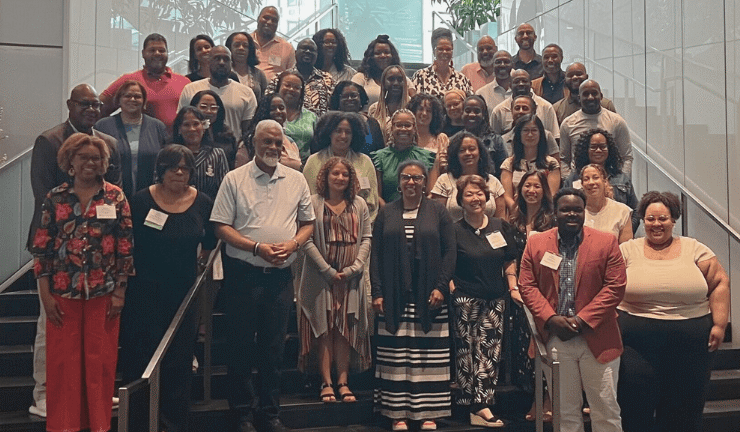Shakespeare and the Headship Transition

This is a piece is from CS&A’s summer focus on leadership transition. Check out the full series here.
In Scene IV of Act I of Macbeth, one of Shakespeare’s great tragedies, Malcolm, son of Duncan, the King of Scotland, relays to his father commentary from a witness to the hanging of the disloyal Thane of Cawdor. Repenting before execution, the Thane of Cawdor, we are told, confessed his treason and accepted responsibility for his behavior. Reporting to his father on this event, Malcolm said of Cawdor, “Nothing in his life became him like the leaving it.”
It strikes me that these words, applied in a totally different context, suggest an apt metaphor for how departing heads should behave during a leadership transition at their schools. That is, they should leave in a way that is even more becoming than the way they conducted themselves while serving in the role.
I know this is a bit of a linguistic stretch, but the message is one that I tried very much to take to heart as I was completing a successful 15-year tenure as Head of School at The Packer Collegiate Institute in Brooklyn, NY. After a 35-year career as a public school English teacher, high school principal, and superintendent of schools, I took a leap into the independent school world and enjoyed the most productive and positive years of my career. I had the opportunity to work with amazing teachers and administrators, a kind, smart, and supportive community, and the type of board of trustees that is the dream of every school leader. Making the decision to leave was hard, but I was excited to begin a new adventure as a consultant where I could share my experience and expertise with other boards and schools and try out some new professional muscles.
Because succession planning was a longtime strategic goal at Packer, I shared my retirement timeline with my board almost three years in advance of my June 30, 2019 departure. I publicly announced in January 2018, allowing our board to conduct an international search that yielded an outstanding successor. During the almost 18 months after I announced, but before I departed, I continued to actively lead every aspect of the school’s daily operation. And I assumed another significant task as well, which was readying Packer for the transition to new leadership. This became a high-level goal of mine, and one on which I spent a great deal of time and focused attention.
With the hope that my experience might be of value to others facing such a transition, I would offer three specific pieces of advice to consider:
1. Be unyieldingly optimistic about the future of the school.
My retirement announcement was met with the predictable congratulations, wishes of good luck, and many public expressions of both disbelief and anxiety. I’ve been around long enough to know that it was undoubtedly also accompanied by some more quietly enjoyed shouts of joy and exultation. When people came to me and indicated they could not imagine Packer without me, I would quip, “I’ve left lots of other jobs at other schools, and not a single one of them closed when I departed.” Even before the search for my successor was officially underway, I assured everyone with whom I spoke that our board was totally on top of the search process, that they had secured the best firm in the country to find my successor (Carney, Sandoe & Associates), and that the search firm and committee were committed to a transparent process that would actively engage all of the school’s key constituencies.
As the search progressed and semi-finalists were announced and brought to campus, and a new head of school was ultimately named, I talked up the candidates and expressed my confidence that the school would be in great hands. I publicly praised the board at every turn, in a manner that I hoped was reassuring to the many members of our school community who abhor even small changes and were intensely concerned about the coming change in top leadership.
2. Keep in mind that people are most concerned about how the leadership change will affect them personally, and not just the school.
Over the course of 15 years, I had developed close, personal relationships with many of my colleagues as well as with members of the board and parent community. Indeed, this was one of the greatest sources of satisfaction and joy associated with a job that I truly loved. Having made this transition before, I understood that the first thing people think about when they realize that you’re leaving is what your departure will mean to them. So I spent a great deal of time and energy assuring folks, in group settings and in one-on-one meetings, that everything was going to be fine.
In my experience, teachers seem to be even more resistant to and frightened by change than individuals in other professions. To address this, I spent considerable time, especially in my last year, meeting individually with faculty and administrators with whom I had especially close relationships, reassuring them of their value to the institution and expressing confidence that they would continue to be regarded as important assets to the school community. I also used this time as an opportunity to mentor colleagues who had demonstrated a career trajectory that I felt was especially compelling, ensuring that they participated in specific professional development that would continue to advance their career, registering several folks in workshops and conferences that would enhance their leadership, and offering to continue to be a resource and supporter of their professional careers after I left campus.
3. Be highly communicative.
As a former English teacher, I needed no reminder about the importance of effective communication, but after my announcement to leave I made a conspicuous effort to up my game whenever I had the opportunity. I seized every chance I got — whether it was a Parent Association presentation, remarks at our annual gala, or an administrative team meeting — to actively lay the foundation for the positive acceptance of my successor. I also made sure to focus faculty meeting and board time on discussions about what is involved in a successful leadership transition. With the faculty, I explicitly talked about how judgmental people can be and how hastily they can jump to erroneous conclusions (not them, of course, but other less enlightened colleagues), and I admonished them, with humor but also with some blunt candor, about how they bore a significant amount of responsibility for the success of the school’s new head. I urged them “to be nice,” and to be on their best behavior; to extend the benefit of the doubt and offer support.
My conversations with our board were no less candid. Packer trustees may serve for a maximum of three three-year terms, or a total of nine years. Consequently, not a single trustee on my board during my last six years at Packer was involved in my hiring or had worked with me at the beginning of my tenure. For every one of them, the headship transition was also a new experience. Keeping this in mind, I let the board know from the outset that I was there to assist in the transition process in any way I could. Initially I provided our board and search committee chairs with the names and contact information of the various search firms from whom they could solicit proposals. When they began to interview firms, I responded to the search chair’s request to help him develop questions to pose during firm interviews. While I was, appropriately, not involved in the actual search process, I made clear that I was always available to serve as a resource.
Knowing that the departure of a longtime head creates a significant power shift with the board, I cautioned our trustees that they would now have all of the institutional memory and the new head would be looking to them for guidance in a way that I no longer required. I explicitly urged them not to make the mistake of seizing this as an opportunity to overstep their role as makers of policy and to drift into the operational side of the school’s daily life, something they had scrupulously avoided during my tenure, even in my earliest days.
Once my successor, the talented Jennifer Weyburn, was named, she and I were in regular contact by phone and email. Because she was working in an overseas school, our direct personal interaction was more limited than either of us would have liked. But I made sure Jennifer was included on all communications I had with the board, both routine and more significant. Because my Upper School division head was also leaving to head his own school, I worked directly with Jennifer on the process we would use to find his replacement. My associate head and I handled all of the paper screening and initial interviewing with the assistance of an internal search committee, making every application document available to the Jennifer. After we had narrowed the field to three finalists, I coordinated with her for a transcontinental visit to campus so she could be directly included in the final stages of the hiring process, knowing that it would be she, not I, who would be working with this new individual.
Leaving a position one loves with grace and optimism is one of the most important gifts a school leader can impart to his or her school. To paraphrase the old Bard, the way you leave should be as classy as the way you led.
Sadly, Bruce passed away on August 15, 2022.
Bruce joined CS&A as a Senior Consultant after four decades of extraordinary leadership in education. He was known by his colleagues and school leaders and friends around the country as a lifelong educator, a fierce advocate for students and faculty, a brilliant thought leader, and a very funny comedian who brought a smile to the face of anyone in his orbit. Prior to joining CS&A, Bruce served for 15 years as the Head of School at Packer Collegiate in Brooklyn, New York. Before Packer, Bruce served for 25 years in various leadership and teaching roles in public schools in the greater New York area. In the aggregate, Bruce’s impact in K-12 education touched multiple generations and thousands of students and families.








